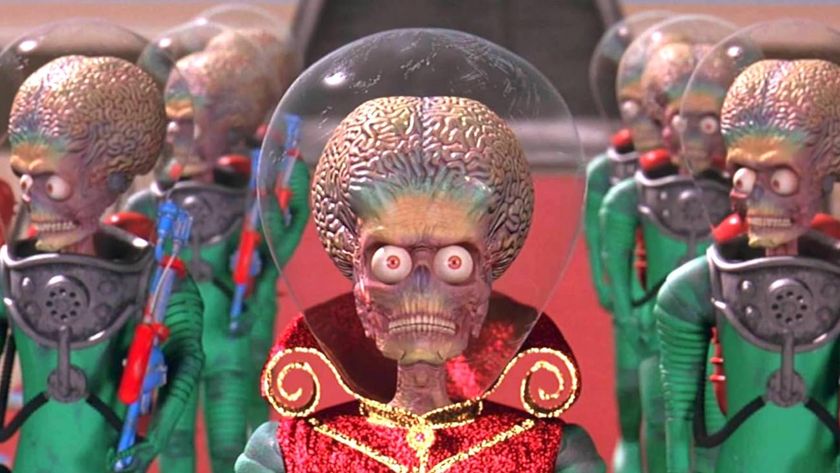'Star Trek's' Shuttlecraft Galileo Warps Into Space Center Houston
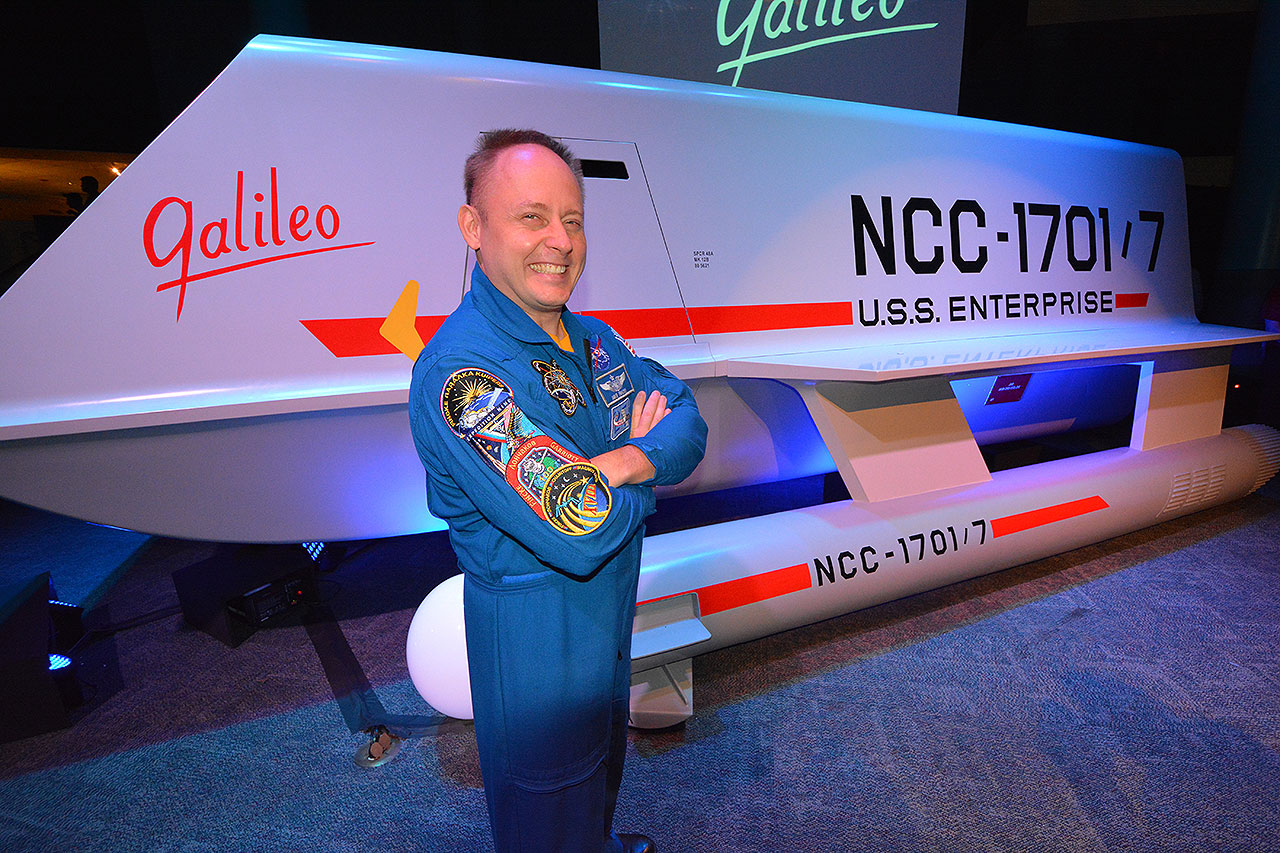
HOUSTON — The first shuttlecraft from the original 1967 "Star Trek" television series has landed at a real-life space center for its final away mission.
Space Center Houston, the official visitor center for NASA's Johnson Space Center in Texas, unveiled the newly-fan-restored Shuttlecraft Galileo on Wednesday (July 31) during a science fiction celebrity-studded event that featured one of the original actors from the full-scale spacecraft's debut episode.

Actor Don Marshall, who portrayed Starfleet Lieutenant Boma "The Galileo Seven," helped launch the prop's public display. [Restored "Star Trek" Shuttlecraft Galileo Brought Back to Life (Photos)]
"This is Galileo!" announced Marshall as the drape covering the shuttlecraft was pulled away.
Joining Marshall for the lights-and-fog-assisted reveal were actors Robert Picardo ("The Doctor" from "Star Trek: Voyager"), Sylvester McCoy (the seventh "Doctor" from "Doctor Who"), Tracy Scoggins ("Captain Elizabeth Lockley" from "Babylon 5") and Gil Gerard ("Captain William Buck Rogers" from "Buck Rogers in 25th Century"), among other sci-fi stars.
The shuttlecraft's eventual permanent exhibit in Space Center Houston's "Zero-G Diner" will highlight how science fiction has inspired real-life space explorers and workers.
"This is one of our ideas as to what a shuttle should be," NASA astronaut Mike Fincke told SPACE.com after the unveiling. "I had a chance to fly on a real space shuttle, so there is a connection. And it is an exciting connection because now it can be made by everyone."
Get the Space.com Newsletter
Breaking space news, the latest updates on rocket launches, skywatching events and more!
"Come to Space Center Houston, be inspired and who knows what some of these kids who are going to be inspired what they are going to build in the future," said Fincke, who also had the chance to play an engineer in the final episode of the "Star Trek: Enterprise" TV series in 2005.
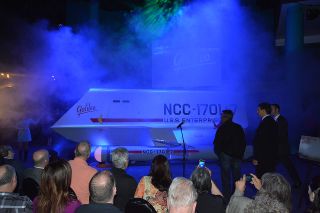
Saving the shuttlecraft
The "Galileo" was introduced to viewers in the 16th episode of "Star Trek." The show's producers initially couldn't afford to build the 23-foot-long by 8-foot-tall (7-by-2.4 meter) prop spacecraft. Instead, they relied on the cheaper "Beam us up, Scotty" transporter special effects to show how the crew of the U.S.S. Enterprise came and went from the much larger starship. [How 'Star Trek's Shuttlecraft Galileo Was Restored (Video)]
In the Jan. 5, 1967 episode, the Galileo shuttlecraft was shown transporting Boma (Marshall), Science Officer Spock (Leonard Nimoy) and Dr. McCoy (DeForest Kelly), among others, to the surface of the planet "Taurus II" on a mission that would leave the spacecraft in need of repair.
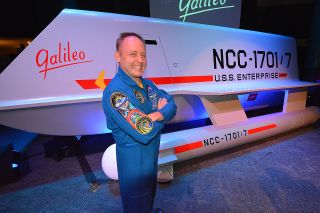
As it turned out, the Galileo suffered even more damage in the decades that followed its seven televised space adventures.
Though never fully dismantled, the steel, wood, and sheet-metal shuttlecraft, which was originally built by a car customizer, fell into disarray as it was passed for a half a century between hands — first to a school for the blind and then to several "Star Trek" collectors and would-be restorers.
It wasn't until June 2012 when 'Star Trek' superfan Adam Schneider bought the degraded prop through an online auction for $61,000 did the Galileo's fate begin to turn around.
Working with "Star Trek" blogger Alec Peters, Schneider and the team at Master Shipwrights in New Jersey used photos and tips from fans of the show to restore the shuttlecraft to its original screen appearance. The repairs, which took nine months under the guidance of craftsman Hans Mikatis, were completed in June when the Galileo was trucked from the Garden State to the Lone Star State for public display.
"If you had told us a year and a month ago that we would have been able to obtain this thing [and] that we'd be able to figure out how to fix it ... and that we'd be able to donate it to Space Center Houston, the home of America's manned space program, I would have said that's just fabulous," Schneider said.
Galileo Seven meets Faith 7
Now part of Space Center Houston's collection, the Galileo shuttlecraft will be displayed in the same building as some of NASA's most historic spacecraft.
"The addition of Galileo adds to the rich history of space exploration as it pays tribute to the way science fiction ignites our imaginations and has inspired generations of innovators," said Richard Allen, president and CEO of Space Center Houston. "Galileo will join the ranks of many other inspiring exhibits at Space Center Houston, including the recent space shuttle mockup addition and the biggest expansion in our history, the 747 Shuttle Carrier Project."
During the same visit to see Galileo, Space Center Houston guests can see the Apollo command module "America" that flew astronauts on the last mission to the moon, the two-man Gemini 5 spacecraft and "Faith 7," Gordon Cooper's Mercury capsule that 50 years ago this past May lifted off on NASA's last one-man mission.
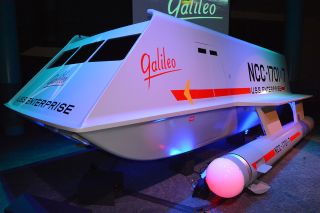
But the Galileo is not Space Center Houston's first foray into exhibiting science fiction artifacts.
Previous temporary exhibits have included costumes and props from the "Star Wars" movies, including a full-size Starfighter vessel and an original prop lightsaber that was flown aboard the real-life space shuttle.
"As Galileo takes it place at Space Center Houston, it does so to capture the imagination and inspire the next generations,” Allen said. “It will serve as a tool with which we can imagine endless possibilities."
This article was corrected to reflect that Capt. Kirk was not part of the Galileo crew during the "Galileo Seven" episode.
Follow us @Spacedotcom, Facebook and Google+. Original article on SPACE.com.
Join our Space Forums to keep talking space on the latest missions, night sky and more! And if you have a news tip, correction or comment, let us know at: community@space.com.

Robert Pearlman is a space historian, journalist and the founder and editor of collectSPACE.com, a daily news publication and community devoted to space history with a particular focus on how and where space exploration intersects with pop culture. Pearlman is also a contributing writer for Space.com and co-author of "Space Stations: The Art, Science, and Reality of Working in Space” published by Smithsonian Books in 2018.In 2009, he was inducted into the U.S. Space Camp Hall of Fame in Huntsville, Alabama. In 2021, he was honored by the American Astronautical Society with the Ordway Award for Sustained Excellence in Spaceflight History. In 2023, the National Space Club Florida Committee recognized Pearlman with the Kolcum News and Communications Award for excellence in telling the space story along the Space Coast and throughout the world.
